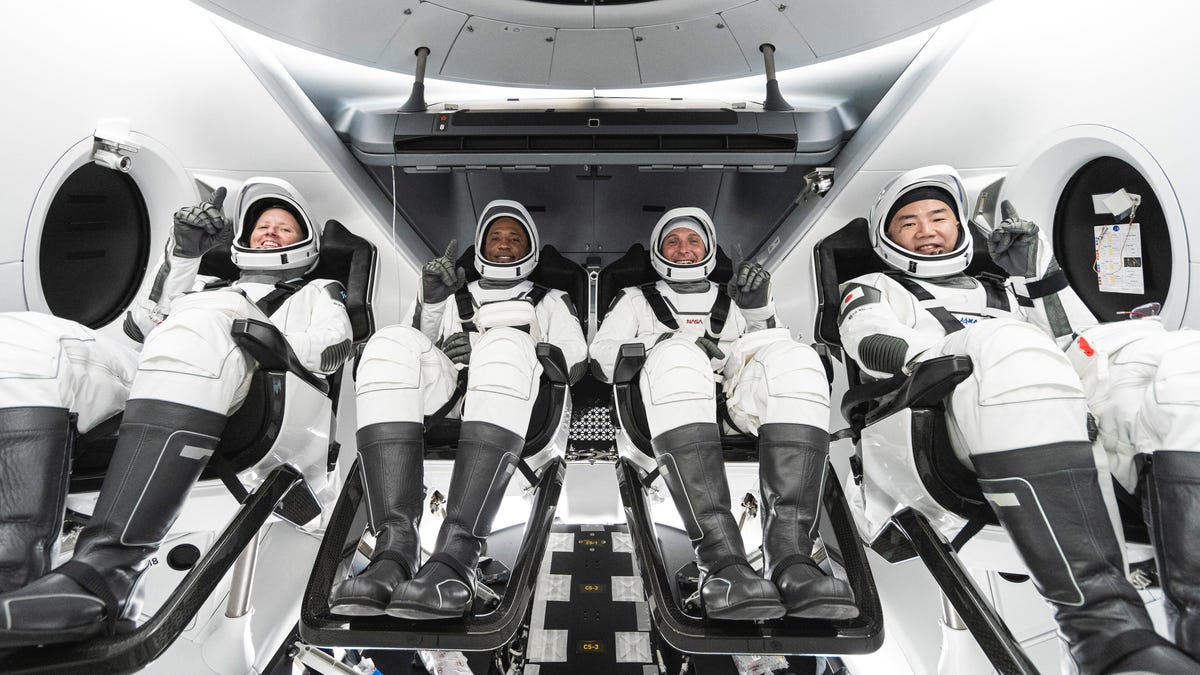With SpaceX rocket issue sorted, NASA ready to send four astronauts to ISS
The aerospace equivalent of some paint chips delayed the next Crew Dragon launch to the International Space Station.

NASA astronauts Shannon Walker, Victor Glover and Mike Hopkins, and astronaut Soichi Noguchi of the Japan Aerospace Exploration Agency, who constitute the crew of NASA's Crew-1 mission, inside SpaceX's Crew Dragon spacecraft.
SpaceX and NASA say they've sorted out a hiccup seen recently in a Falcon 9 rocket and are aiming to send four astronauts to the International Space Station aboard a Crew Dragon spacecraft on Nov. 14.
On Oct. 2, a planned Falcon 9 launch of a US Space Force GPS satellite was automatically aborted just a few seconds before liftoff. An ensuing investigation revealed that two of the rocket's nine Merlin engines had attempted to start early, triggering the automatic abort.
In a call with reporters on Wednesday, Hans Koenigsmann, SpaceX vice president for build and flight reliability, explained that the abort prevented a "hard start" that could've done some damage to the engines.
The engines were removed from the rocket for testing, and some blockage in a tiny relief valve line was discovered. A red masking lacquer, similar to something like nail polish, was apparently dislodged during cleaning and washed into a tiny hole, about one-sixteenth of an inch (1.57 millimeters) across, where it then hardened and blocked the line.
Koenigsmann said SpaceX "found the same tendencies" on engines to be used for the Crew-1 launch as well as the planned Nov. 10 launch of NASA's Sentinel-6 Michael Freilich satellite to monitor sea levels worldwide.
The suspect engines have been swapped out, and NASA and SpaceX now say they expect to be ready to launch on Nov. 14.
The Crew-1 mission marks the first crewed flight to the ISS since the Demo-1 flight of a Crew Dragon carried NASA astronauts Doug Hurley and Bob Behnken there; that landmark flight was the first crewed flight from US soil since the end of the Space Shuttle program.
When Crew-1 delivers NASA astronauts Michael Hopkins, Victor Glover and Shannon Walker, along with the Japan Aerospace Exploration Agency's Soichi Noguchi, to the ISS, it'll expand the space station's crew size to seven people, allowing for more research to be done in orbit.
Crew-1 is set to launch from Kennedy Space Center in Florida on Nov. 14 at 4:49 p.m. PT (7:49 p.m. ET).

